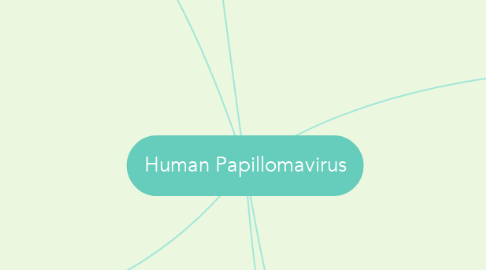
1. Pathogenesis
1.1. Genital warts
1.1.1. Usually benign small bumps in genital area
1.2. Cancer
1.2.1. Mouth, throat, cervical, vaginal, vulvar, penile
1.2.1.1. Carcinoma of cervix- HPV type 16, 18, 31, 33, 35, 39, 45, 51, 52, 56, 58, 59, 66, 68, 70, 73, 82
1.2.1.2. Carcinoma of penis- HPV type 16, 18
1.2.1.3. Oral carcinoma- HPV type 16, 18
1.3. Non-genital warts
1.3.1. Common warts (verrucae vulgaris) - HPV type 1, 2, 4, 26, 27, 29, 41, 57, 65, 75-78
1.3.2. Plantar warts (myrmecias)- HPV types 1, 2, 4, 60, 63
1.4. Infects basal keratinocytes of epidermis
1.4.1. HPV type 6 & 11- low risk, leads to pre-cancerous lesions
1.4.2. HPV types 16 & 18- high risk, progress to carcinomas
1.5. Occurs as virus that remains latent in cells
1.6. Spread through having vaginal, anal, or oral sex with someone who is infected with the virus
2. Risk factors
2.1. Men who identify as gay or bisexual
2.2. Adults who identify as transgender
2.3. Young adults with immune comprising conditions, such as HIV
2.4. Sexually active young adults
2.5. Contact with someone who's infected with the virus
2.5.1. Sexual-genital warts and cancers
2.5.2. Non-sexual contact- Plantar warts and general/ verrucae vulgaris warts
3. Incidence/Prevalence
3.1. 5.6% of sexually active adults in the U.S. aged 18-59 diagnosed with genital warts
3.2. HPV is the most common STI in the U.S.
3.3. In 2008, there were 14,100,000 cases of HPV in the United States
3.4. From 2011-2014, any oral HPV among 18-69 year olds was 7.3%
3.5. From 2013-2014, genital HPV among 18-59 year olds was 42.5% of the U.S. population
4. Diagnostics
4.1. Cervical cancer screenings (PAP smear)- checks for abnormal cells on cervix
4.2. HPV DNA test- can find specific HPV types on the cervix, used combined with PAP smear. "Co- testing"
4.3. Clinical examination
4.4. Biopsy
4.4.1. For women with a history of vuvlar dysplasia and post menopause
4.5. Acetic acid test- examines cervical lesions
5. Treatments
5.1. Topical medications
5.1.1. Immune response modifiers- external anogenital warts
5.1.2. Cytotoxic agents- non genital; antiproflierative drugs, chemodestructive agents, bichloracetic acid
5.2. No treatments for actual virus, but treatments for warts and cancer
5.3. Surgical interventions-electrosurgery, use of laser therapy
5.4. Freezing
5.5. Tissue scraping
5.6. Cauterization
5.7. Some can go away on own, without requiring treatment depending on the type
5.8. HPV vaccine
5.8.1. Gardasil
5.8.2. Recommended for children ages 11-12
